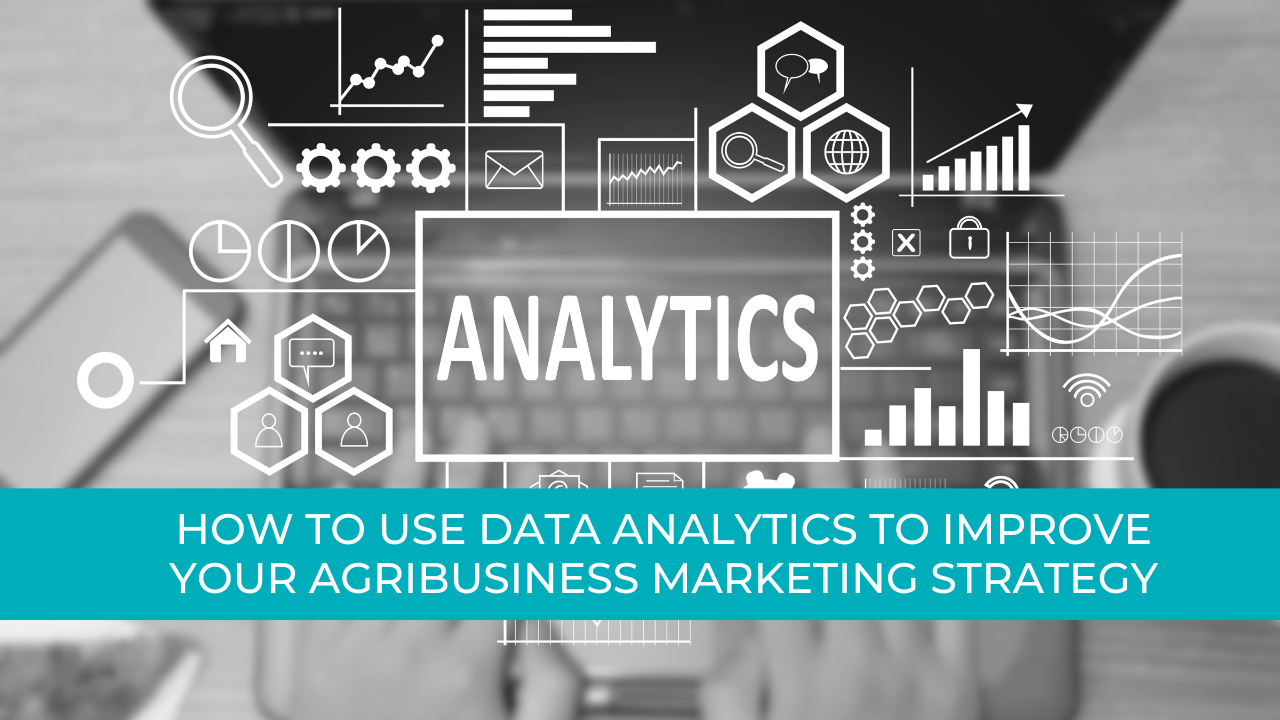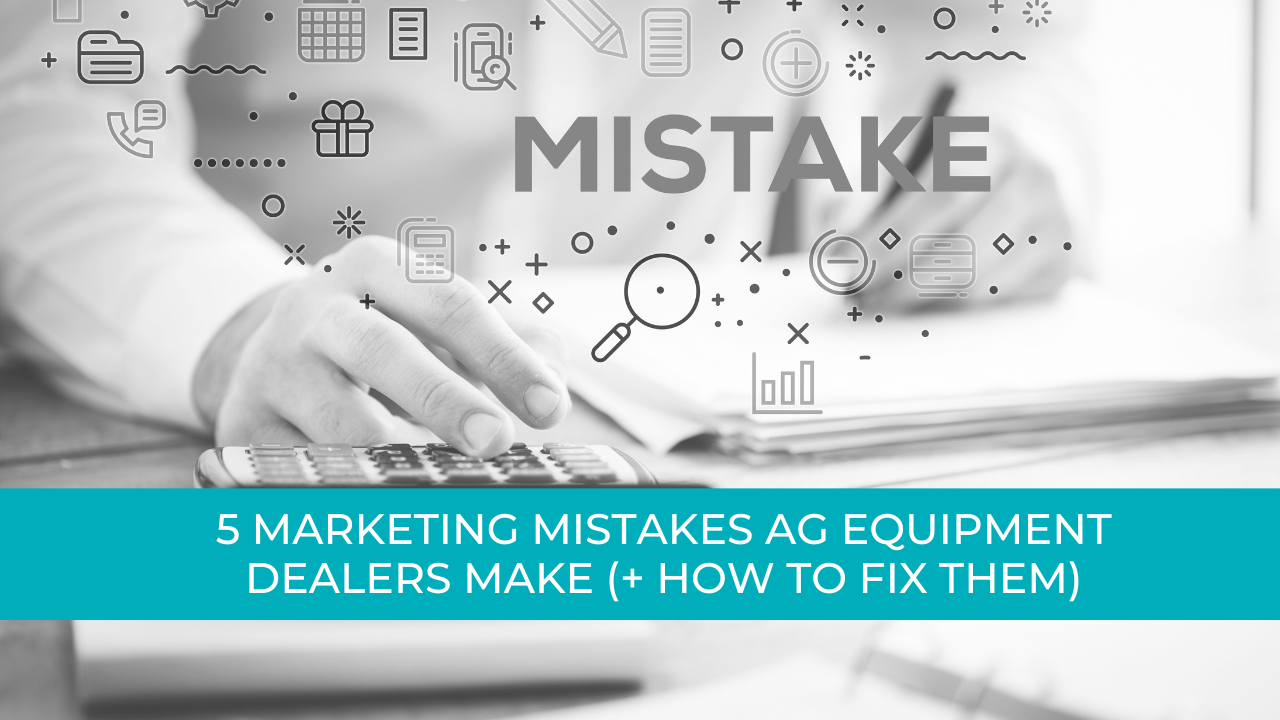Agtivation Blog
What's New In The Digital Ag World
Developing Data-Driven Pricing Models in Agribusiness
In today's competitive landscape, understanding consumer behavior and market trends is vital for setting prices that not only attract customers but also maximize profits. Discovering how to leverage this data can transform your pricing approach and enhance your business's bottom line. Let's explore the essential steps to create models that really work.

Key Takeaways
- Leverage market trend analysis and consumer behavior data to inform and refine pricing strategies in agribusiness.
- Utilize competitor pricing insights to position products effectively and identify unique value propositions.
- Implement pricing psychology principles to enhance customer perception of value and willingness to pay.
- Conduct surveys and interviews for direct consumer feedback to tailor pricing strategies to market demands.
- Monitor and adjust pricing dynamically based on market fluctuations and seasonal demand variations.
Understanding Pricing Models in Agribusiness
Pricing models in agribusiness can feel like a puzzle, but understanding them is key to your success. You need to explore various pricing strategies to find the one that best fits your market positioning. Start by evaluating your costs, competitors, and customer expectations. This helps you determine whether to adopt a premium pricing approach or a value-based strategy. Each choice influences how customers perceive your brand and products. Additionally, think about your target audience and their willingness to pay; this insight will guide your pricing decisions. By aligning your pricing models with your overall marketing goals, you can enhance your competitive edge and drive sales, making your agribusiness thrive in today's dynamic marketplace.
The Importance of Data in Pricing Decisions
Making informed pricing decisions requires more than just a gut feeling. You need to tap into various data sources to understand market trends and consumer behavior. By analyzing this data, you can uncover valuable insights that inform your pricing strategy. Understanding pricing psychology is essential too; it helps you grasp how customers perceive value and make purchasing decisions. For instance, knowing how to set prices just below a round number can influence buyers' choices. When you combine data-driven insights with psychological principles, you create a pricing model that resonates with your customers and maximizes your profits. This approach not only boosts sales but also builds trust with your clientele, leading to long-term success in your agribusiness.
Types of Data to Consider for Pricing
When setting prices for your agricultural products, consider several types of data that can guide your decisions. Understanding these data sources can help you tap into pricing psychology, ensuring you're meeting customer expectations while maximizing profits. Here are three key types of data to focus on:
- Market Trends: Analyze current market conditions and demand for your products to stay competitive.
- Competitor Pricing: Keep an eye on how similar products are priced, helping you position your offerings effectively.
- Customer Behavior: Study purchasing patterns and preferences to tailor your pricing strategy and appeal to your target audience.
Gathering Relevant Market Data
To set your pricing strategy effectively, you need to gather relevant market data. Start by identifying key market trends, analyzing what your competitors charge, and understanding what consumers prefer. This information will help you make informed decisions that resonate with your target audience.
Identifying Key Market Trends
Understanding key market trends is essential for your agricultural business, especially as consumer preferences and technology continue to evolve. To effectively gather relevant market data, focus on the following:
- Engage in Market Research: Conduct surveys and interviews to understand what your customers value most. This insight helps shape your pricing strategy.
- Analyze Consumer Behavior: Keep an eye on how buyers react to different pricing strategies. This is vital for leveraging pricing psychology.
- Monitor Industry Developments: Stay updated with advancements and shifts in the agribusiness sector, as they can influence your pricing models.
Analyzing Competitor Pricing
Gathering insights about what competitors are charging can provide valuable information for your pricing strategy. By conducting a thorough competitor analysis, you can identify their pricing strategies and understand how they position themselves in the market. Look at their product offerings, promotions, and any discounts they provide. This information helps you assess where your prices stand and whether adjustments are needed. Additionally, pay attention to customer reviews and feedback on competitor products; this can reveal perceived value and quality. Ultimately, knowing what your competitors charge allows you to make informed decisions that can enhance your pricing strategy, helping you stay competitive while ensuring profitability in your agribusiness.
Understanding Consumer Preferences
When you know what your customers prefer, it can make a big difference in how you price and market your products. Understanding consumer preferences helps you tailor your offerings to meet their needs. Here are three ways to gather relevant market data:
- Collect Consumer Feedback: Use surveys and reviews to learn what your customers like and dislike.
- Conduct Market Segmentation: Identify different customer groups based on their preferences, allowing you to create targeted pricing strategies.
- Analyze Purchase History: Look at what items are selling well and when, revealing trends that can guide your pricing.
Analyzing Customer Behavior and Preferences
How can knowing your customers' behaviors and preferences help your agricultural business thrive? By analyzing customer feedback, you can gain insights into what your clients truly value. This information allows you to tailor your products and services to meet their needs more effectively. Market segmentation is another key strategy. By dividing your customer base into specific groups, you can create targeted marketing campaigns that resonate with each segment. This approach not only improves customer satisfaction but also boosts your sales. When you understand what drives your customers, you can set prices that reflect their willingness to pay, ensuring your business remains competitive and profitable. Embrace these strategies to build stronger connections with your customers and enhance your pricing models.
Competitive Analysis for Pricing Strategies
When you're setting prices for your agribusiness, understanding market trends is key. Take a closer look at your competitors' pricing and identify what makes your offerings unique. This competitive analysis helps you position your products effectively and attract more customers.
Understanding Market Trends
Understanding market trends is essential for setting effective pricing strategies in your agribusiness. By conducting a thorough market analysis, you can identify key trends that influence your pricing decisions. Here are three important aspects to contemplate:
- Consumer Preferences: Stay updated on what your customers want and how their needs change over time.
- Seasonal Fluctuations: Recognize how seasons impact demand and adjust your prices accordingly to maximize profits.
- Competitive Landscape: Monitor your competitors and their pricing strategies to guarantee you remain competitive and appealing to your target market.
Analyzing Competitor Pricing
Analyzing competitor pricing can give you valuable insights into how to set your own prices effectively. By conducting a thorough competitor analysis, you can discover pricing strategies that work in your market. Look at what similar businesses are charging for their products or services. Pay attention to any trends, discounts, or unique offers they might have. This information can help you determine where your prices should fall to remain competitive. Don't just focus on the numbers; think about the value you provide compared to your competitors. Understanding your competition can empower you to make informed pricing decisions that attract customers while still ensuring profitability. Keep an eye on the market and adjust your strategies as needed.
Identifying Value Differentiators
To stand out in the crowded agribusiness market, it's essential to identify what makes your products or services unique. Understanding your value propositions helps you connect with specific customer segments effectively. Here are three steps to pinpoint your differentiators:
- Assess Competitors: Look at what others offer and find gaps in their services or products.
- Gather Customer Feedback: Ask your customers what they value most. Their insights can reveal your strengths.
- Define Your Unique Selling Points: Highlight what sets you apart, whether it's quality, sustainability, or customer service.
Developing Cost-Based Pricing Models
When you're setting prices for your agricultural products, developing a cost-based pricing model can help guarantee you cover your expenses while remaining competitive. Start with a thorough cost analysis, identifying all your fixed and variable costs. This will give you a clear picture of how much you need to charge to break even. Next, consider price elasticity—how sensitive your customers are to price changes. If your products have low price elasticity, you can set higher prices without losing many sales. However, if demand is sensitive, you might need to keep prices closer to competitors. By combining these insights, you can create a pricing strategy that guarantees profitability while appealing to your market.
Value-Based Pricing Approaches in Agriculture
While setting prices based on costs is important, focusing on the value your products provide can lead to even better results. By adopting value-based pricing approaches, you can enhance your value perception among customers and improve your bottom line. Here are three steps to take into account:
- Understand Customer Segmentation: Identify the different groups of customers you serve and their unique needs.
- Communicate Value: Clearly explain how your products solve problems or meet needs, boosting their perceived value.
- Gather Feedback: Regularly seek customer input to refine your offerings and guarantee alignment with their expectations.
Dynamic Pricing: Adapting to Market Changes
As the agricultural market fluctuates, adopting dynamic pricing strategies can help you stay competitive and maximize your profits. By understanding dynamic market shifts, you can quickly adjust your prices based on demand, supply, and external factors like weather or economic changes. This flexibility allows you to respond to market conditions effectively, ensuring you capture opportunities when they arise.
Implementing flexible pricing strategies means you can offer discounts during surplus seasons or increase prices when demand peaks. It's about being proactive rather than reactive. By monitoring market trends and customer behavior, you can make informed pricing decisions that not only improve your bottom line but also enhance customer satisfaction, keeping your business thriving in a constantly changing landscape.
Implementing Technology for Data Analysis
Using dynamic pricing strategies allows you to stay competitive, but to make the most of these approaches, you need to harness technology for data analysis. Effective technology integration helps you collect and analyze data, leading to better pricing decisions. Here are three key steps to get started:
- Invest in Data Tools: Use software that helps you gather and manage data efficiently.
- Utilize Data Visualization: Create clear visuals that illustrate trends and patterns in your data, making it easier to interpret.
- Train Your Team: Guarantee your staff knows how to use these technologies and understands the importance of data-driven insights.
Testing and Adjusting Pricing Strategies
When you test and adjust your pricing strategies, you're taking an important step toward finding what works best for your business. Start by understanding pricing psychology—how your customers perceive value can greatly impact their purchasing decisions. Use customer segmentation to identify different groups within your market; this way, you can tailor your prices and messaging to meet their unique needs. Experiment with various pricing models, like tiered pricing or discounts, to see what resonates most. Monitor customer responses closely, and be ready to pivot if something isn't working. By continuously testing and refining your approach, you'll better align your pricing with your customers' expectations and improve your overall profitability.
Communicating Pricing Changes to Customers
Communicating pricing changes to your customers can feel intimidating, but it's essential for maintaining trust and loyalty. To do this effectively, focus on clear customer communication and pricing transparency. Here are three steps you can take:
- Notify Early: Let your customers know about upcoming price changes well in advance. This gives them time to adjust.
- Explain the Why: Share the reasons behind the pricing changes. Whether it's due to rising costs or enhanced product quality, transparency builds trust.
- Offer Alternatives: If possible, provide options or discounts to ease the adjustment. This shows you care about their needs.
Measuring the Impact of Pricing Decisions
When it comes to pricing decisions, understanding the right strategies can really make a difference for your business. You need to analyze market trends and keep an eye on what your competitors are doing to stay ahead. By measuring the impact of your pricing choices, you can make smarter decisions that boost your success.
Pricing Strategies Overview
Understanding how your pricing strategies can impact your agribusiness is essential for success. To effectively manage your pricing, consider these key strategies:
- Pricing Psychology: People often perceive value based on price. Adjusting your pricing can influence how customers view your products.
- Seasonal Pricing: Adjust your prices based on demand fluctuations. During peak seasons, higher prices can capitalize on increased demand, while off-peak times may require discounts to attract buyers.
- Value-Based Pricing: Set prices based on the value you provide rather than costs. Communicating the benefits of your products can justify higher prices.
Analyzing Market Trends
Analyzing market trends is vital for making smart pricing decisions in your agribusiness. By conducting thorough market research, you can identify customer preferences and understand the factors that influence their buying behavior. This insight helps you set prices that resonate with your target audience.
Additionally, understanding pricing psychology is fundamental; knowing how customers perceive value can guide you in crafting offers that attract buyers. For instance, using charm pricing—setting prices just below a round number—can make your products seem more appealing.
Stay updated on market shifts and adjust your pricing strategies accordingly. This proactive approach guarantees your agribusiness remains competitive while meeting customer expectations effectively. Embrace data to make informed decisions that drive success!
Understanding Competitor Pricing
To stay competitive in your agribusiness, keeping an eye on what your competitors are charging can be essential. Understanding competitor pricing helps you refine your market positioning and make informed pricing decisions. Here are three steps to conduct effective competitor analysis:
- Identify Your Competitors: List key players in your market who offer similar products or services.
- Analyze Their Prices: Look at their pricing structure, discounts, and any promotional offers they provide.
- Evaluate Market Positioning: Understand how their pricing affects their brand perception and customer loyalty.
Frequently Asked Questions
How Can I Start Collecting Data for Pricing Models?
To start collecting data for pricing models, identify relevant data sources like customer feedback and market trends. Track pricing metrics such as sales volume and competitor prices to inform your pricing strategies effectively.
What Tools Can Assist With Data Analysis in Agribusiness?
Imagine traversing a vast field; the right tools help you find your way. For data analysis, consider using statistical software and data visualization tools. They'll make your insights clear and guide your agricultural decisions effectively.
How Often Should I Review My Pricing Strategy?
You should review your pricing strategy regularly, ideally every season. By keeping an eye on seasonal trends and market fluctuations, you'll adapt effectively, ensuring your prices stay competitive and aligned with customer needs.
Can Customer Feedback Influence My Pricing Decisions?
Customer feedback can shape your pricing decisions. By creating feedback loops, you'll understand customer perceptions better, allowing you to adjust prices based on their needs and preferences, enhancing satisfaction and loyalty.
What Are Common Mistakes in Pricing Strategies to Avoid?
When pricing your products, avoid overlooking value perception and competitor analysis. Ignoring how customers view your offering or not checking what others charge can lead to missed opportunities and lost sales. Stay informed and adjust accordingly.
Final Thoughts
In agribusiness, mastering data-driven pricing practices paves the way for profitability and performance. By harnessing helpful insights and honing your understanding of customer preferences, you can create compelling pricing strategies. Remember, it's not just about numbers; it's about steering through the nuances of market dynamics and customer expectations. Stay flexible, adjust as necessary, and communicate clearly. With the right approach, you're not just setting prices—you're shaping value and securing success in a competitive landscape.














